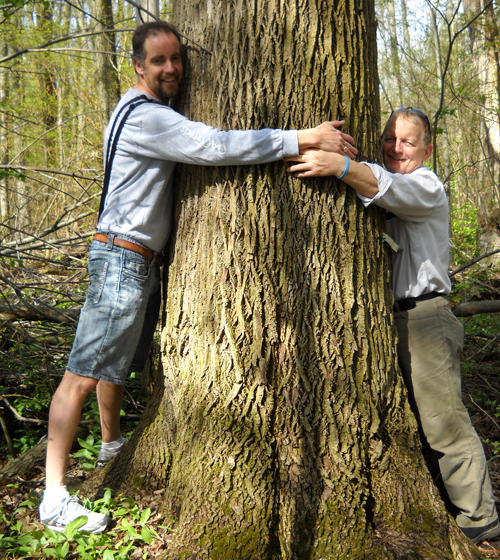
This spring, about 200 ash trees on campus and in the U of G Arboretum will be “inoculated” in a bid to save them from falling to an invasive beetle that has already killed millions of trees in the northern United States and parts of southern Ontario.
The trees will receive an insecticide injection intended to protect them against the invasive emerald ash borer, which was discovered late last year in Guelph.
“It’s only a matter of time before it gets into the Arboretum,” says Chris Earley, interpretive biologist and education co-ordinator with the Arboretum.
He and other experts expect to see untreated trees dying throughout the city in two to three years. “Ashes are one of the most common trees in southern Ontario forests. When they’re gone, you’re going to notice it.”
In the Arboretum, he hopes to protect a relative handful of trees. But prohibitive treatment costs – injecting a single tree can cost between $200 and $400 – mean that most of the thousands of specimens there will remain untreated and will likely be lost, says Earley.
On the main campus, Physical Resources plans to treat about 200 trees.
The department is awaiting estimates this month from three companies, with treatment to begin in late May. The treatment – injecting insecticide into the tree – is supposed to be 95-per-cent effective.
That treatment may include Arboretum trees, says Jill Vigers, manager of architectural services in Physical Resources and chair of U of G’s landscape advisory committee. “The landscape advisory committee will prioritize the best way to spend the funds we have been allotted in order to preserve the best trees on campus and protect the important aspects of the campus landscape.”
She says dead or weakened trees can pose a safety risk.
Vigers says trees need to receive the preventive treatment this month, allowing no time for licensing U of G grounds staff specially to carry out this treatment. Treatment would also require extra time for Physical Resources staffers during a busy spring.
Separately, the U of G Arboretum has contracted a company to treat 19 larger or more prominent specimens this spring for a total of about $4,700. Next year, another 10 trees will be treated there.
Without funding for additional treatment – both the initial application and requisite follow-up injections every two years – Earley says most of the Arboretum’s ash trees will succumb to the insect.
Most ash varieties lack natural resistance to the insect, although blue ash – threatened in Ontario and present in the Arboretum’s collections – appears less susceptible. Another rare variety in those collections is the pumpkin ash. White and black ash trees grow naturally in the Arboretum’s wooded areas.
“It’s one of the most prominent trees in our old-growth forest,” he says.
Mountain ash is not a true ash and is unaffected by the emerald ash borer.
On the main campus, one ash towers above the Bullring. Several older trees ring the back of the Macdonald Stewart Art Centre; two more large specimens stand on Gordon Street near Alexander Hall.
Younger ash trees are planted in front of the Ontario Veterinary College, along the West Ring Road west of OVC and along the west side of the arena. Others adorn campus parking lots and form a small grove between the Food Science and the Animal Science and Nutrition buildings.
Says Arboretum manager Ric Jordan: “It represents such a large part of our urban forest as well as our native forest. Probably in most cities it’s the highest percentage of most trees planted.”
In 2010, Wellington County was declared a regulated area for emerald ash borer by the Canadian Food Inspection Agency (CFIA). Ash trees and firewood may not be moved out of a regulated area. The CFIA confirmed last fall’s sighting in south Guelph.
Introduced accidentally from China, the metallic-green insect began killing ash trees in 2002 in Michigan and Windsor, Ont.
The insect burrows into trees to lay its eggs. The larva feeds on the tree, ultimately plugging its connective tissues and preventing water and nutrients from circulating. Trees normally die within three years of infestation.
Adults emerge after chewing D-shaped exit holes in the bark.
Woodpeckers and some wasps feed on the insect. But injection is the most effective treatment.
U of G researchers have helped develop both treatment and monitoring strategies.
In the School of Environmental Sciences, Prof. Gard Otis and former grad students did early work on the systemic insecticide now registered for treating trees. SES professor Steve Marshall worked with students on wasps that prey on the emerald ash borer and are used to monitor trees for the borer’s presence.
Marshall’s lab has just completed a field guide to the beetle family that includes the emerald ash borer.
Note: Ric Jordan will discuss the emerald ash borer and its potential impact on Guelph’s ash trees at 7 p.m. tonight on Rogers Cable TV’s Talk Local.